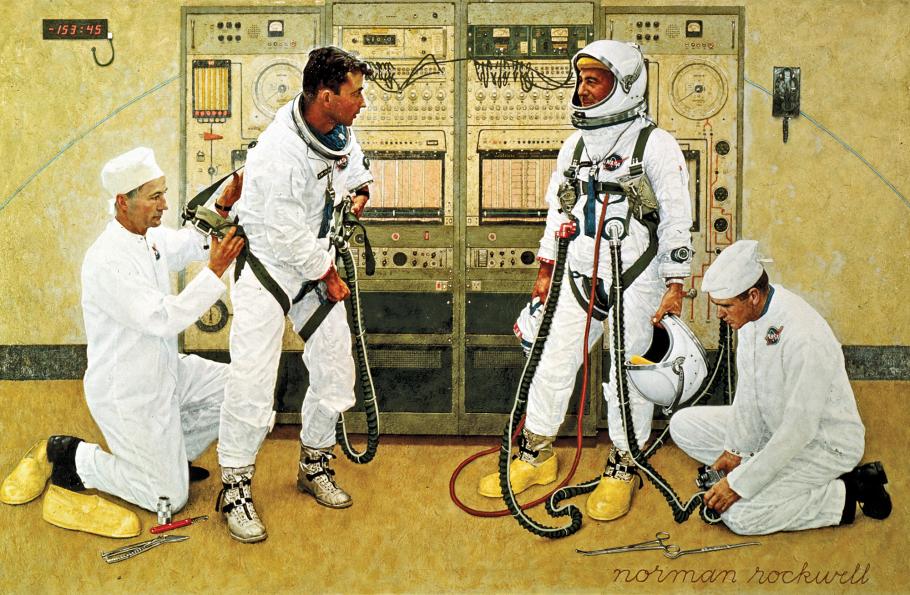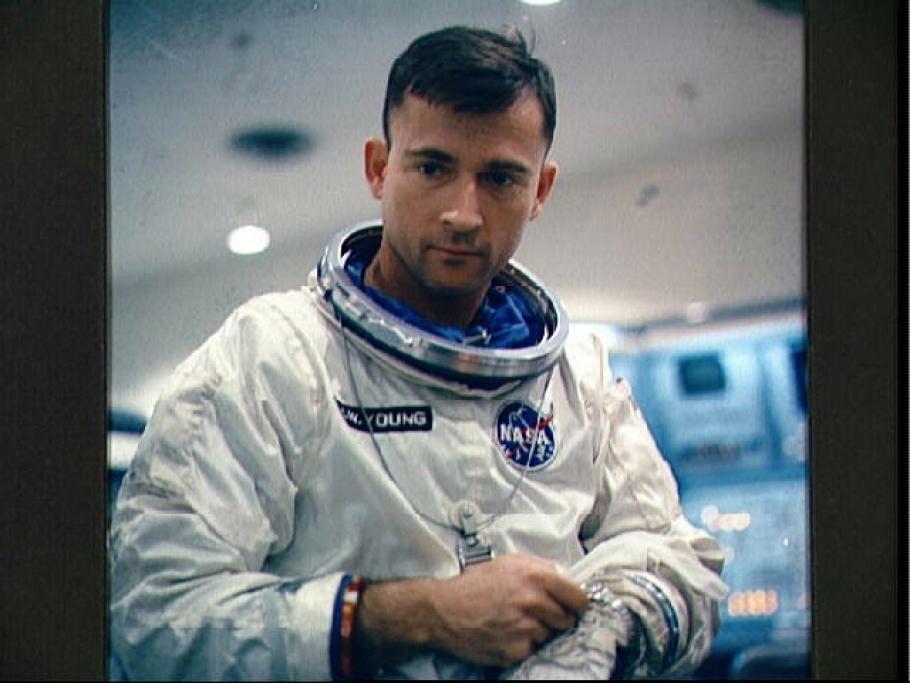As an astronaut, John Young (1930-2018) was one of a kind. He was the first person to fly in space six times (twice each on Gemini, Apollo, and Space Shuttle missions), the first person to circle the Moon alone, the first Space Shuttle mission commander, and the first to command another Space Shuttle mission. He served as an astronaut longer than anyone to date: 42 years (1962-2004).
Part of Greatest Images in NASA (GRIN) collection.
In 1962, at age 32, John Young entered the NASA astronaut corps in the second group selected. He became the first of his class to fly in space, piloting the first U.S. two-man mission (Gemini 3) in 1965. He flew again as Commander on Gemini 10 a year later. Young then served as Apollo 10 Command Module Pilot in May 1969, a mission to the Moon to rehearse for the Apollo 11 first lunar landing in July. While his two crewmates descended within ten miles of the surface in the lunar module, Young became the first person in solo flight around the Moon. As Commander of Apollo 16 in April 1972, Young landed and walked on the Moon, the ninth of only 12 men to do so, and one of only three to go to the Moon twice.
Early in the next decade, Young extended his flight record as Commander of STS-1, the first Space Shuttle orbital test flight mission in April 1981, and then as Commander of STS-9, the first Shuttle Spacelab mission in November 1983, both on the orbiter Columbia. The latter was the first spaceflight with a crew of six. The STS-1 mission was especially daring, as the Shuttle had not had an all-systems launch test or a test return from space, because it could not fly without a crew. Young and pilot Robert Crippen returned from this two-day mission ebullient about the new spaceplane.
Young was legendary within NASA for his laconic speaking style, his razor-sharp dry wit, and his fierce commitment to flight safety. He was widely regarded as an “astronaut’s astronaut” for his innate abilities, technical competence, and generosity in teaching others what he knew that they needed to know. He served as Chief of the Astronaut Office for 13 years (1974-1987) and then became a senior technical manager at NASA’s Johnson Space Center, always insisting on safety as the top priority in engineering and management decisions, until his retirement at age 74.
Before joining NASA, Young entered the United States Navy in 1952 after graduating from the Georgia Institute of Technology with highest honors in aeronautical engineering. He served aboard a destroyer during the Korean War, next flew helicopters, and then flew fighters from aircraft carriers for Fighter Squadron 103 (VF-103). In 1959, he went on to Naval Test Pilot School and the Naval Air Test Center at Patuxent, Maryland, setting two world time-to-climb records in the Phantom II. He attained the naval rank of Captain.
John Young logged more than 24,000 hours in aircraft and 835 hours (35 days) in space, with 20 hours spent in extravehicular activity (spacewalks) on the Moon. His record of six spaceflights held until 2002.
The Museum’s collection includes more than 70 items associated with John Young.



